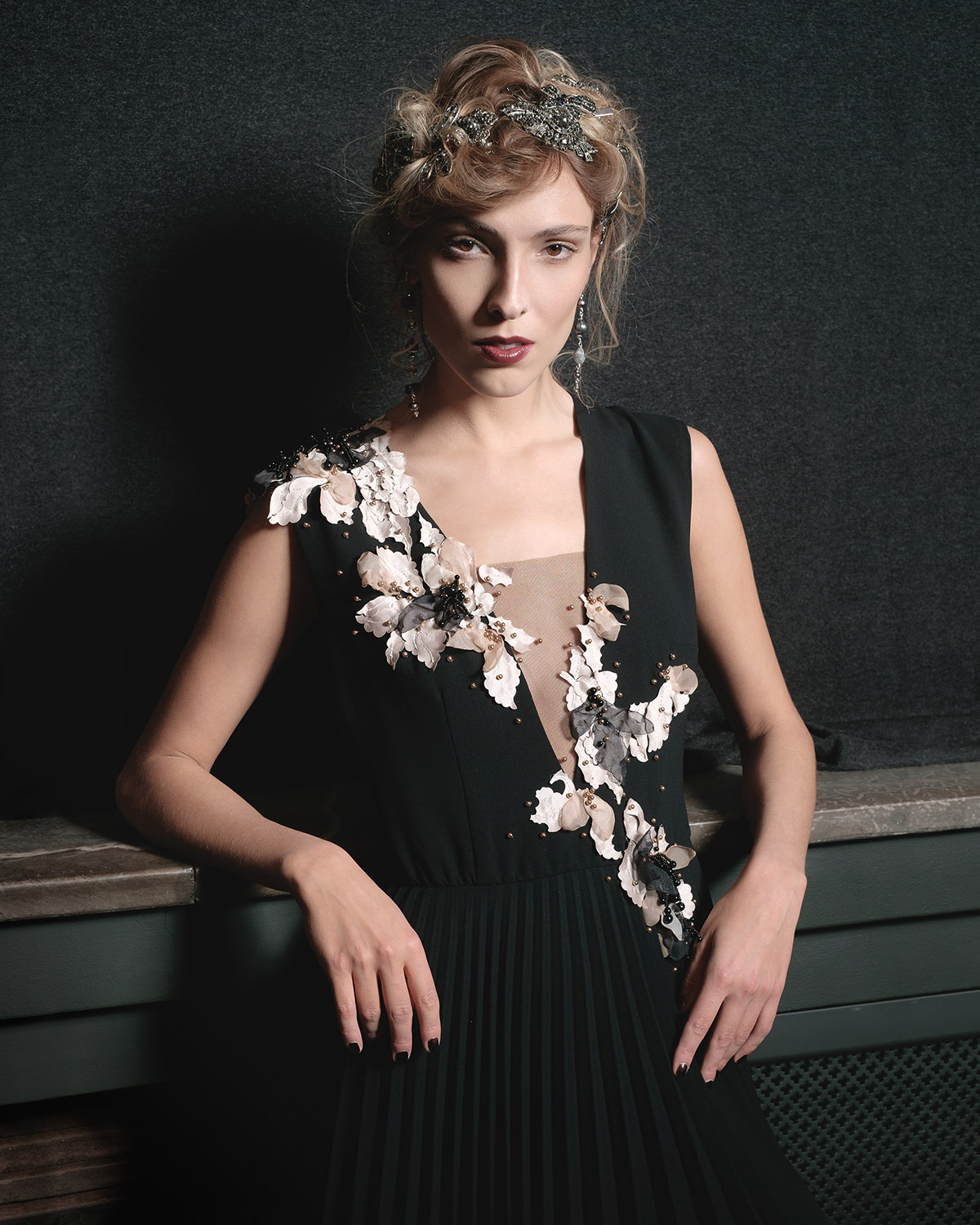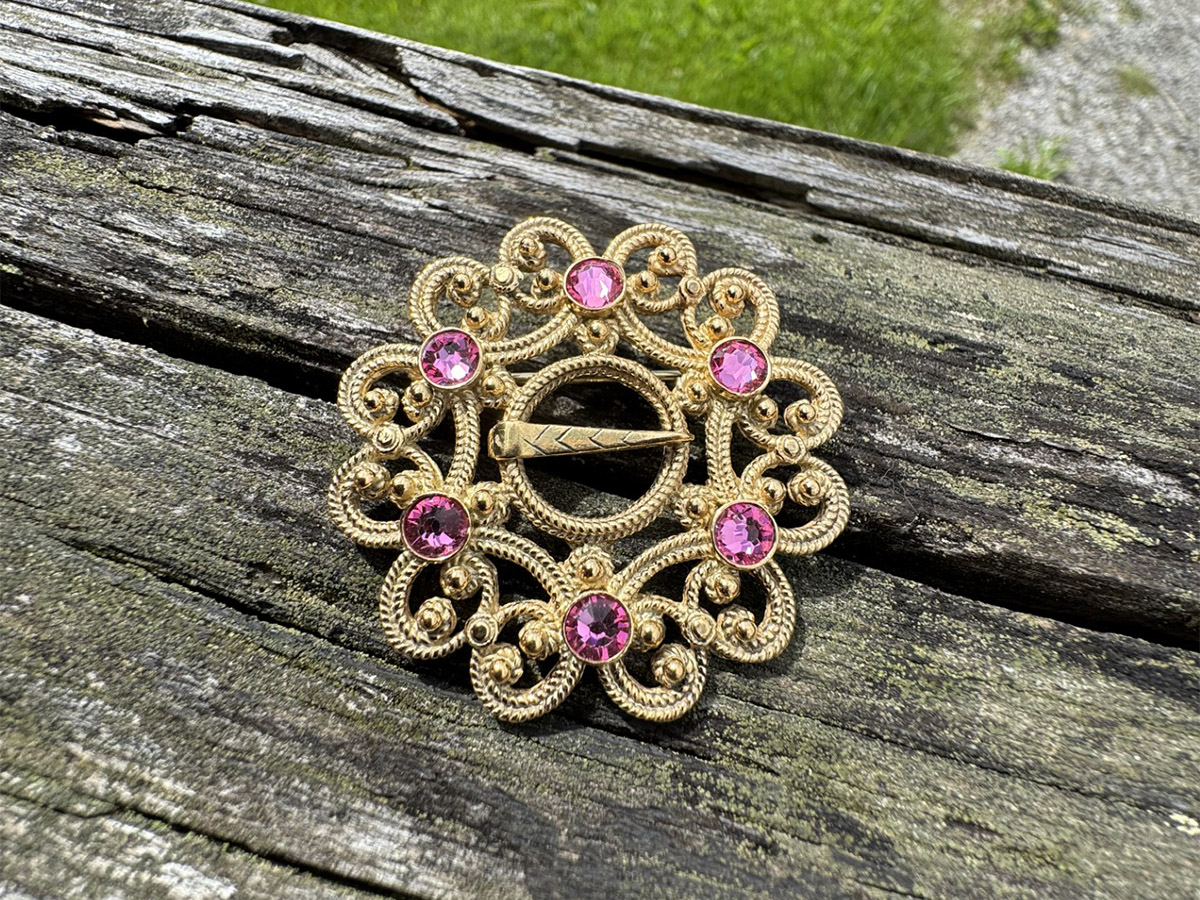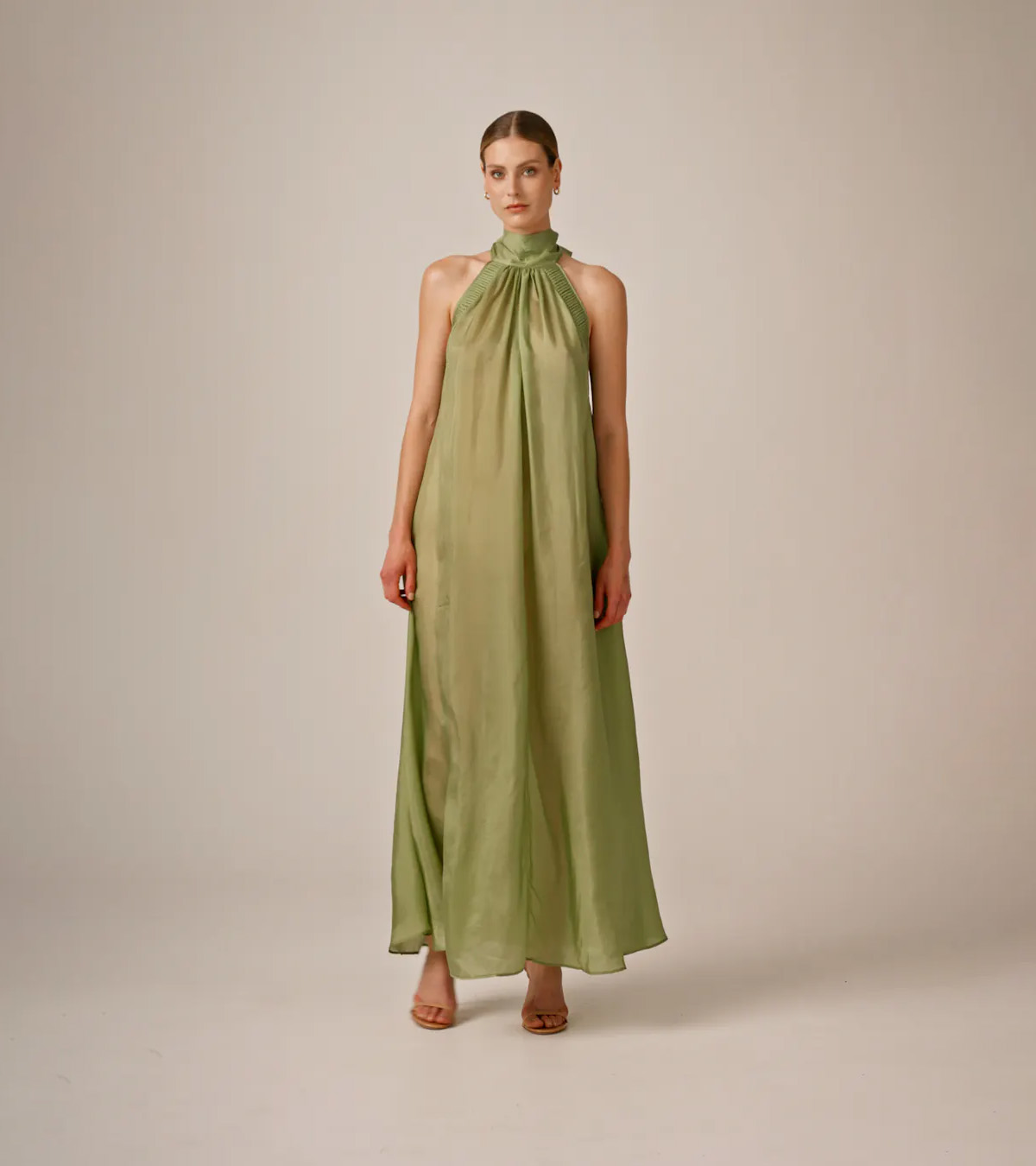Slow, green, timeless fashion: Dale of Norway is modernising the traditional
By Celina Tran | Photos: Dale of Norway
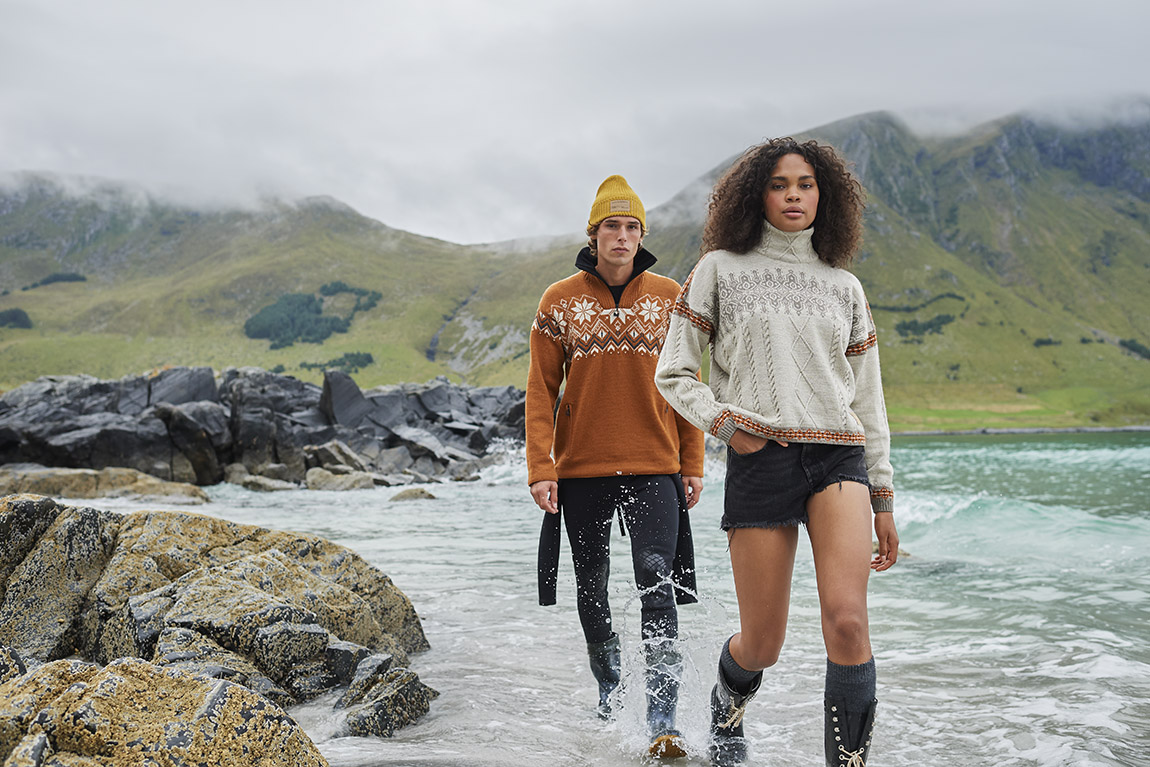
Fongen Weatherproof sweater and Aspøy sweater.
Tucked away in a west-Norwegian fjord lies the Dale factory, only a stone’s throw away from its original birthplace. Established in 1879, Dale of Norway has grown to command a vast international market with its traditional, yet unique knitwear. Dale of Norway is a distinctive, modern brand that has brought Norwegian heritage to people everywhere.
What does the average Norwegian have in common with Olympic skiing champions? Three things: heaps of snow, skis in the shed and, of course, a Dale of Norway jumper. For Norwegians stranded abroad, a single glance at a knitted Norwegian eight-petal rose is enough to bring them back home to the prickly feeling of snow against the skin, and the scent and sound of smoky, crackling logs in the fireplace. Founded over 140 years ago, Dale of Norway has become a staple of Norwegian heritage – one that inspires a unanimous sense of home.
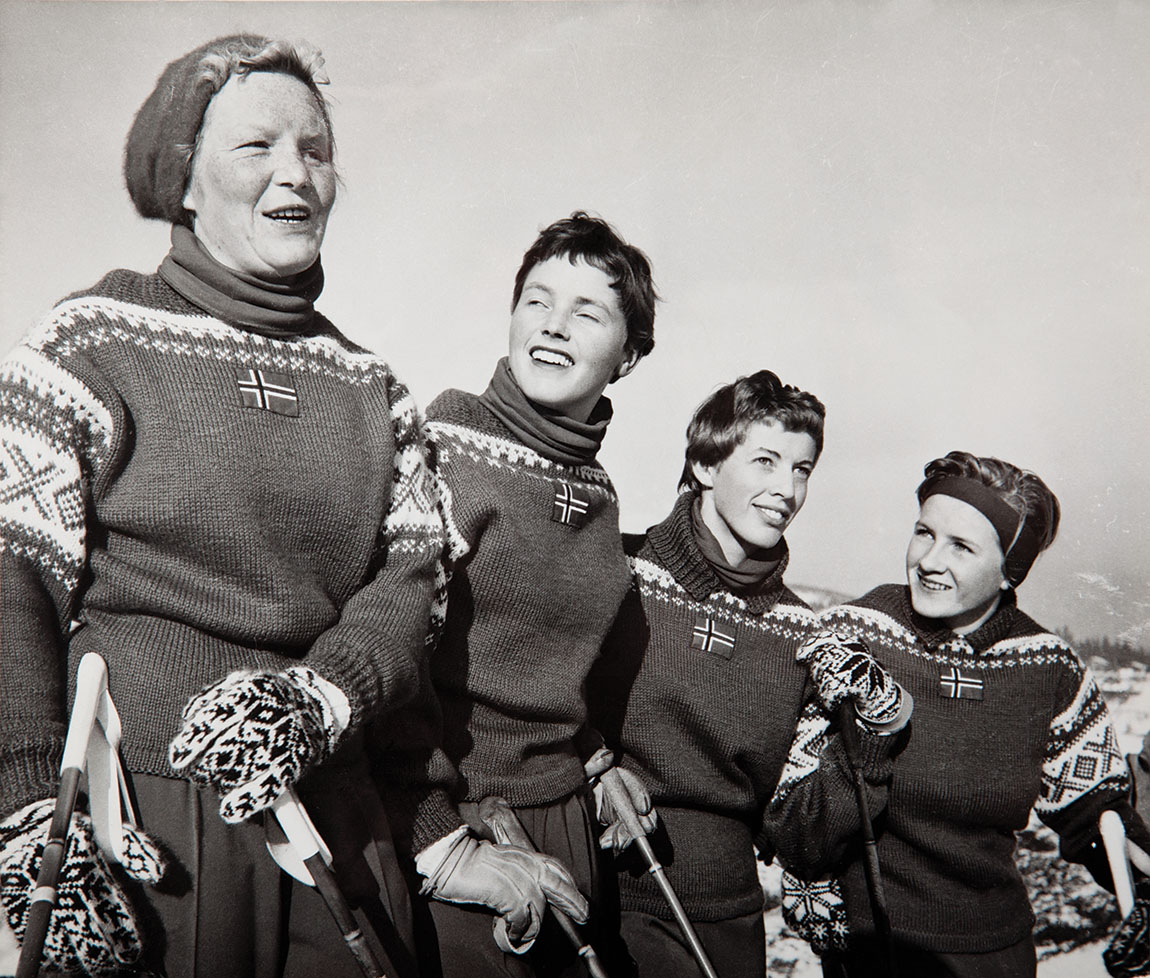
1956 Winter Oympic Cortina d’Ampezzo Italy.
“We’re very proud that Dale is recognised as the original pattern designer of classic Norwegian knitwear,” says Christine Madsen, who runs Dale’s marketing department. Tradition plays an important role in the brand, but Madsen explains that Dale is modernising, while constantly working to ensure timelessness and quality.
“Tradition and heritage are important aspects of our designs, but we also have to adjust to keep the brand updated,” she says. “Some of our designs remain the same, others are more contemporary. Our goal is to ensure that our clothes don’t have a due date. The timeless style and high quality means that Dale products can be passed down from generation to generation.”
Nowadays, the Dale collection offers an extensive collection of wear, from thinner merino products perfect for sport and activities, to thick winter sweaters for cold, snowy days on the slopes. They also offer a range of warm and comfortable everyday wear, fit for work and leisure.
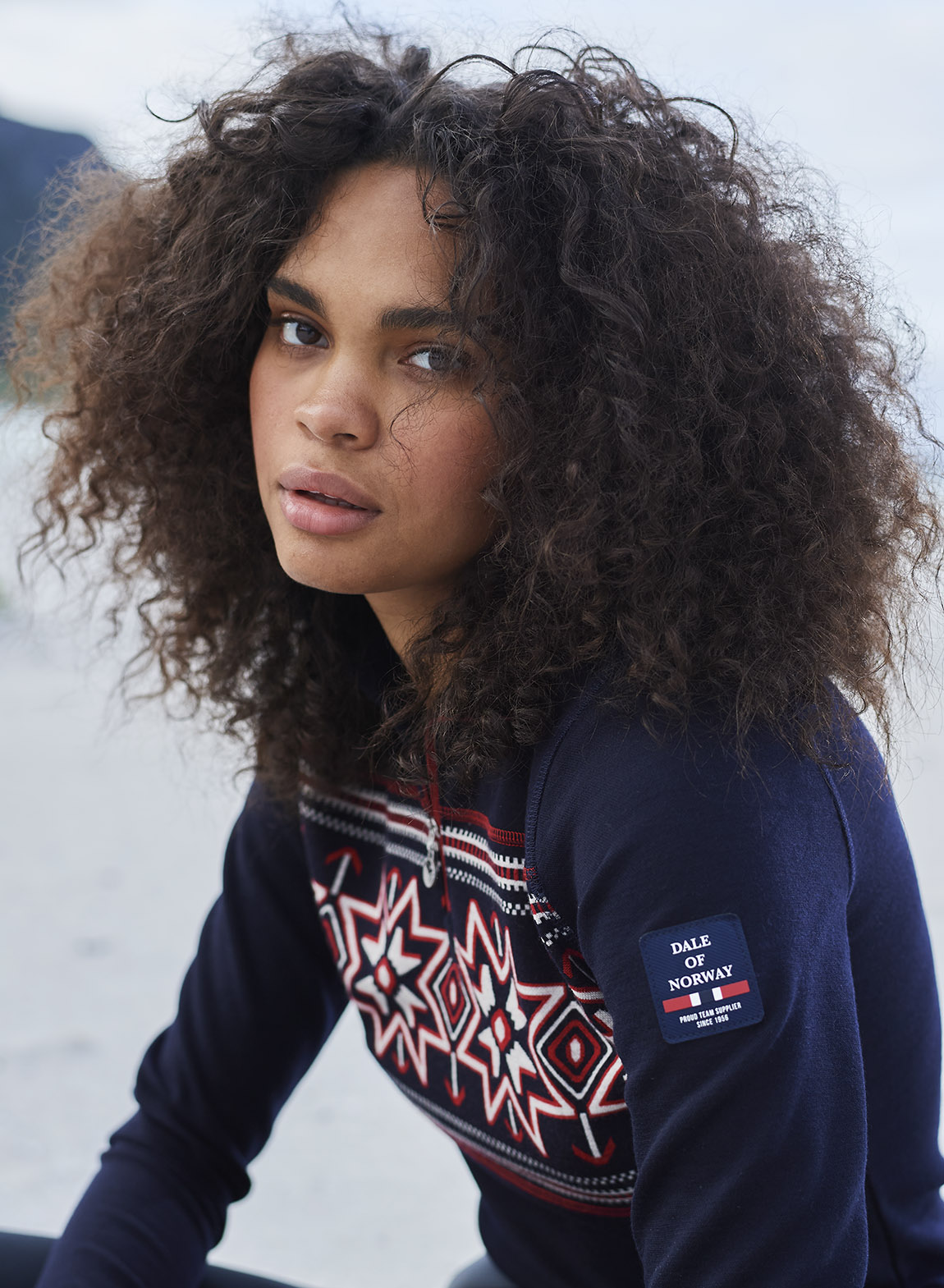
Tindefjell basic Women’s sweater.
An adventure for the ages
At the end of the 1800s, when Norway’s status as a prosperous oil nation was a distant reverie, politician and businessman Peter Jebsen found himself in Dale – a tiny, fading place made up of a few impoverished farms. In the town’s awe-inspiring river Bergdalselva, Jebsen’s entrepreneurial mind saw an eternal source of energy, perfect for running a factory.
In 1879, textile manufacturing at Dale began and has not stopped since. The factory survived floods, fires, two world wars, a depression and even several pandemics. Every time, Dale of Norway came out on the other side, stronger and better.
The factory put Dale on the map, not only in Norway, but internationally. For the Olympic games of 1956, they had the honour of producing the championship sweaters. They have since been responsible for every single Olympic sweater worn by the Norwegian ski team, earning worldwide recognition as the internationally renowned brand they are today. “We’ve experienced an explosion of international interest for knitting, knitwear, our patterns and brand, which is very exciting,” says Madsen.
Slow fashion and a green future
Even before terms like ‘carbon footprint’ and ‘global warming’ began flooding social media and political campaigns, Dale of Norway has championed protecting the nature that nurtured their existence and inspired their designs.
Transparent about their journey to becoming even greener, Dale acknowledges the large role the textile industry plays in climate change, especially with large fast-fashion brands’ constant new launches and over-production. “We’re trying to do the opposite: slow fashion,” says Madsen. “We only launch one new collection a year, and we adjust our production to ensure that we don’t produce more than we actually sell.”
The focus on using natural, long-lasting materials and creating high-quality products is Dale of Norway’s main contribution to making the fashion industry greener. “About 40 per cent of our collection is knitted using locally sourced Norwegian wool, but we also use high-quality merino wool from producers in South America, New Zealand and Australia, as it’s softer and more comfortable on the skin,” says Madsen. “For the most part, production happens in Norway, so that we can ensure good working conditions and continue to provide jobs in the local area,” she adds.
“We’re so lucky to have a great starting point with our hydropower and the unmatched adaptability of Norwegian wool. Even though we’re one of the greener textile manufacturers out there, we constantly try to do better.”
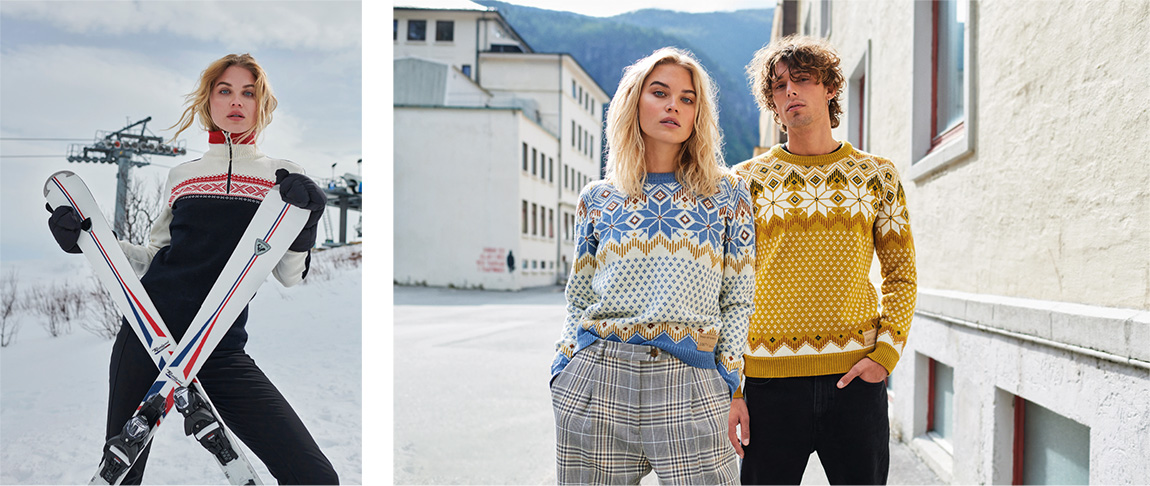
Left: Dystingen womens sweater. Right: Vilja and Vegard sweater.
Web: www.daleofnorway.com Instagram: @DaleofNorway Facebook: Dale of Norway
Subscribe to Our Newsletter
Receive our monthly newsletter by email

